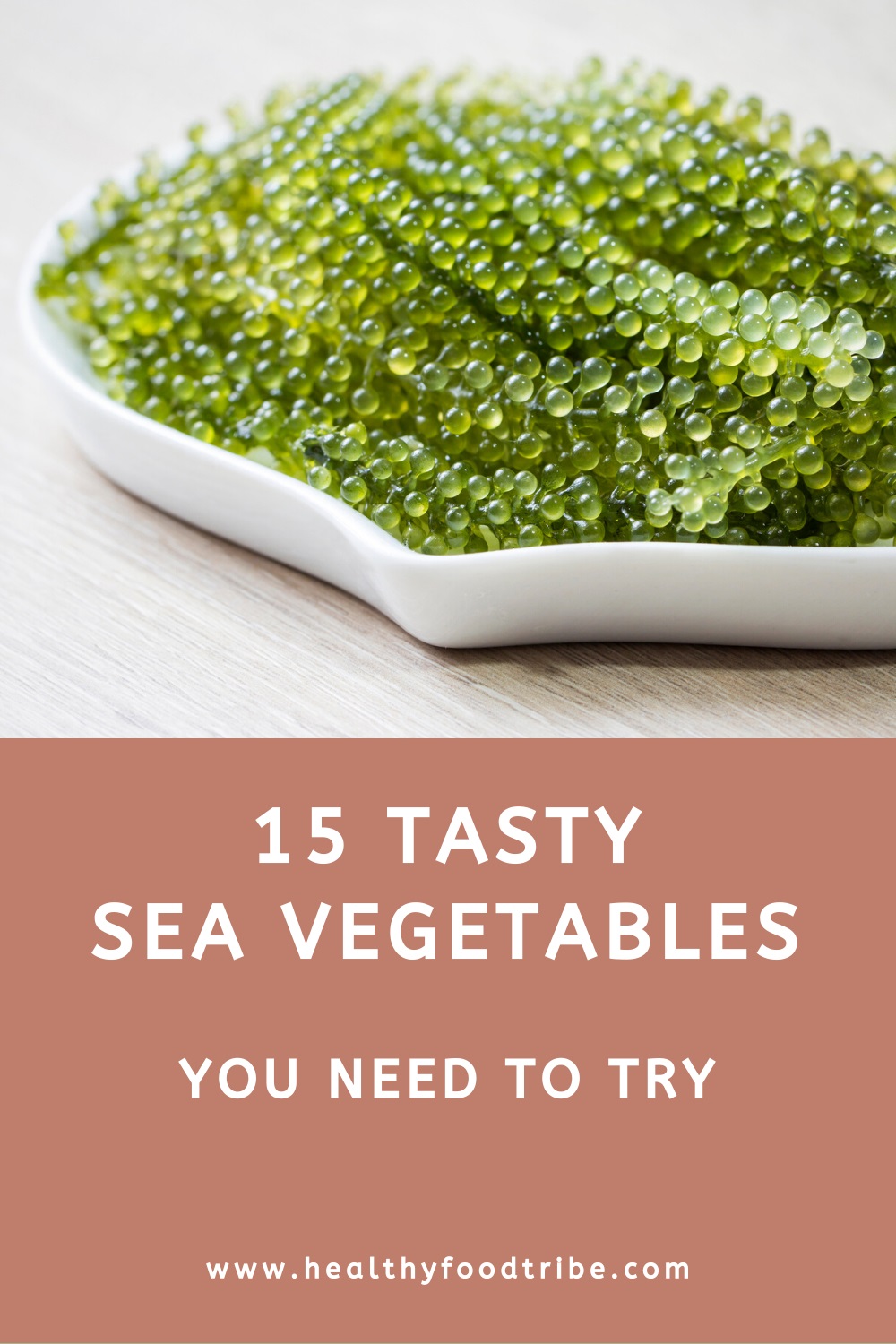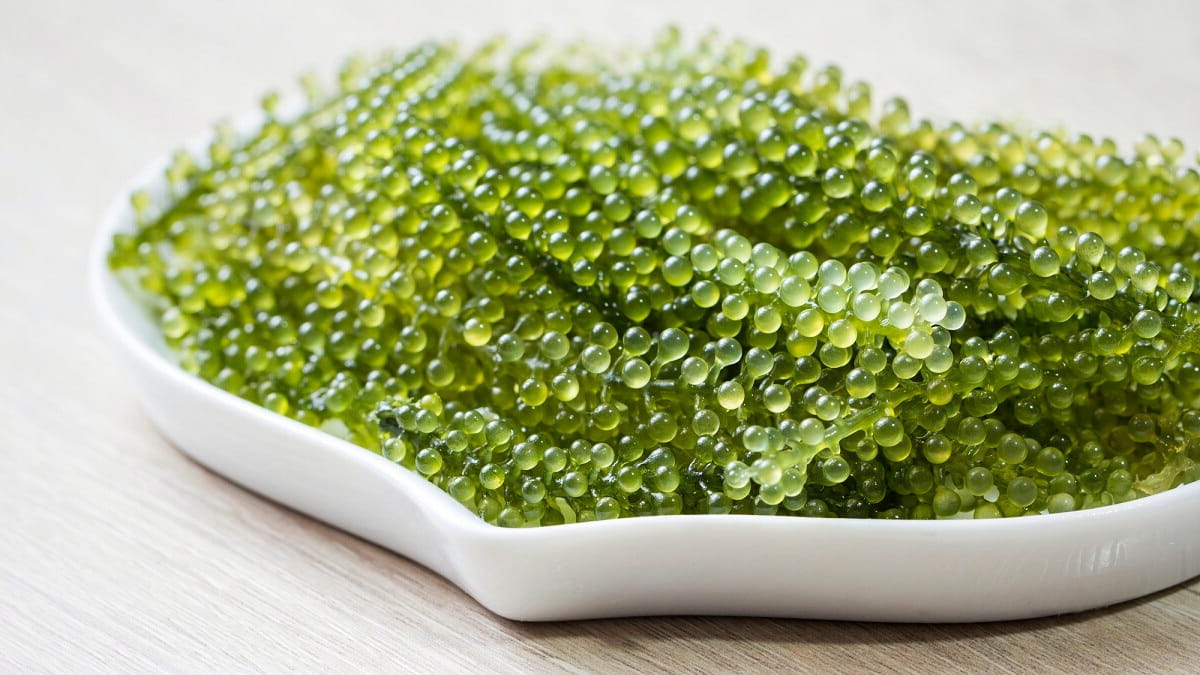Last updated: April 14, 2024
Ten of my favorite sea vegetables from around the world, each with unique colors, shapes, flavors, and nutritional profiles.
The term sea vegetables includes various edible plants and algae that grow in or near the ocean. While these are less commonly consumed in the West, they are very popular in many Eastern cultures. Not only are these sea veggies typically very nutritious, but they can also add a lot of flavor to any dish.
Prepare to delve deep into the sea’s edible treasures with the following ten popular and tasty sea vegetables and seaweeds.
1. Dulse
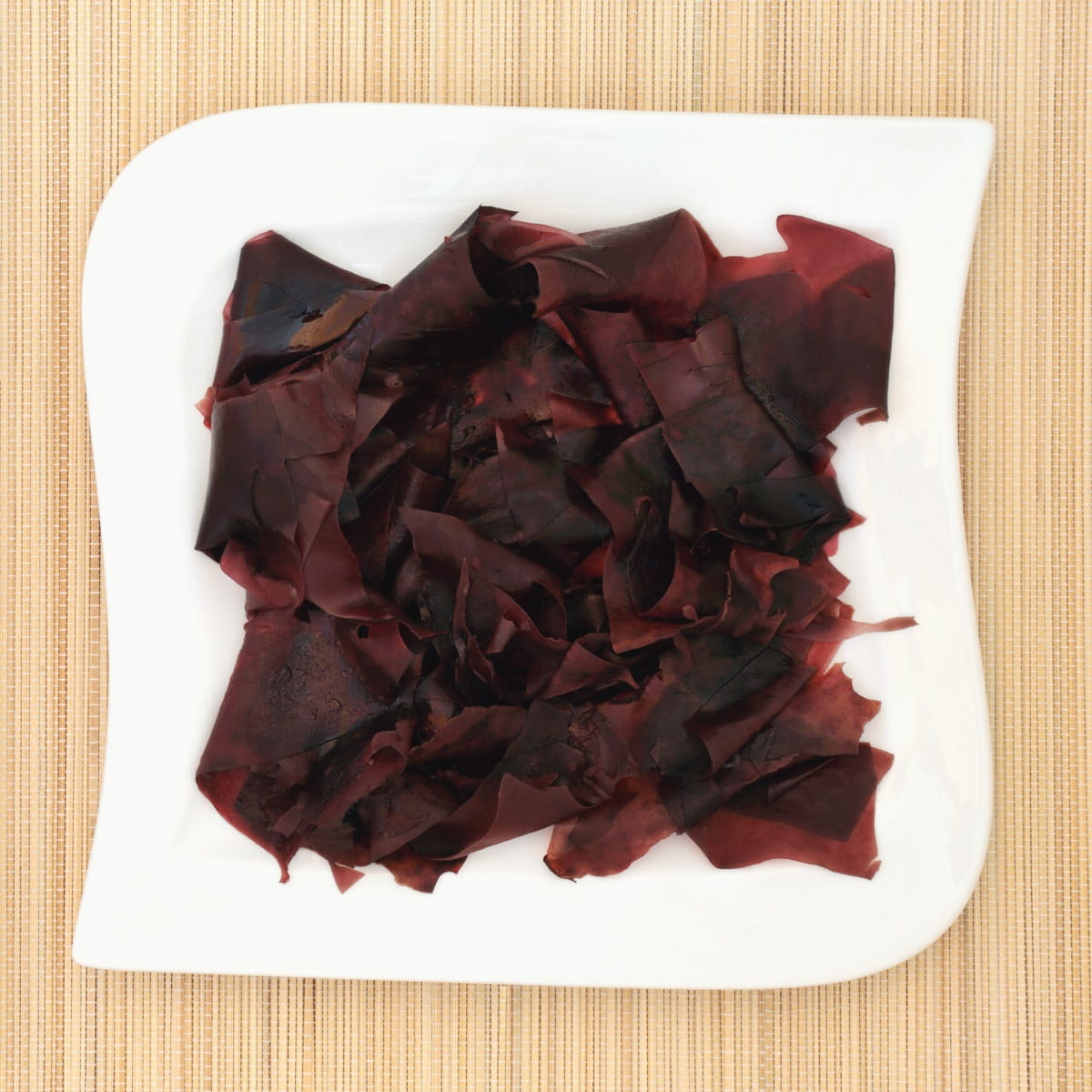
Dulse is a flat-leafed, red algae that has a tall, upright growth habit. It grows in both the Pacific and the Atlantic and has been a staple food for many cultures throughout the centuries.
In Iceland, this red seaweed provided an important source of fiber to inhabitants of the island during the harsh winter months when land vegetables couldn’t grow. The seaweed was harvested and dried in the fall and eaten all winter long. In Scotland, monks have been harvesting this sea veggie for many centuries.
Dulse is typically used as you would any other leafy vegetable. It makes a great, salty addition to salads and can even be prepared as a vegan bacon substitute. It is also ground into a flavoring for popcorn and other dishes.
Like other red algae, this one should be consumed in moderation. While it is an excellent source of minerals and protein, it also tends to accumulate heavy metals.
2. Irish Moss
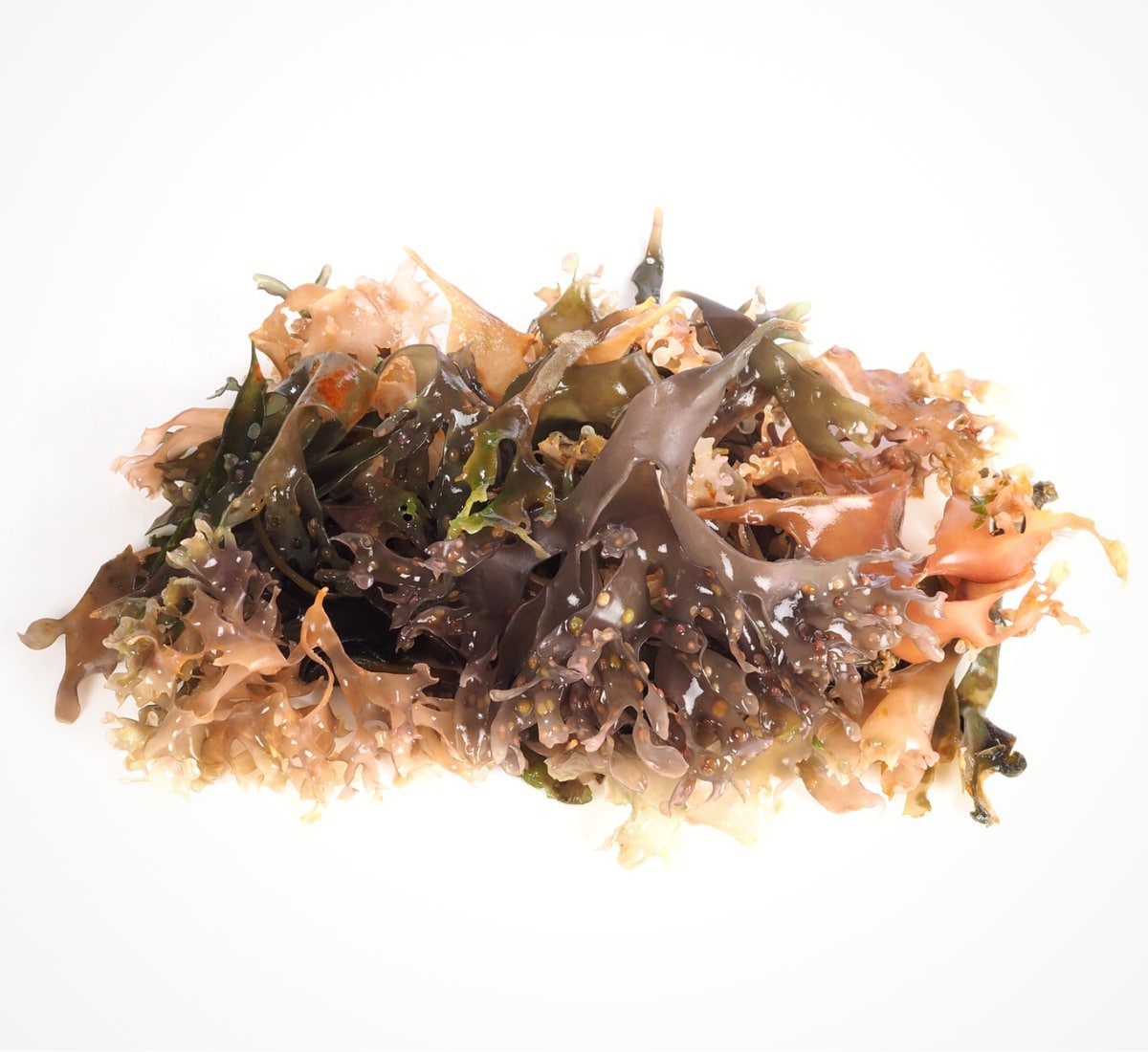
Another commonly consumed red algae is Irish moss. This delicate seaweed grows in a bushy, branching pattern that looks somewhat like lush moss. It has a dark purple-brown color, sometimes with edges of green.
Despite the name, this seaweed grows readily across the coasts of the Atlantic beyond Ireland, as well as in Japan. It is commonly harvested in beach towns throughout New England as well as Europe.
The body of this unique seaweed is made up largely of carrageenan. In fact, Irish moss is used to create industrial carrageenan, which is used as a thickening agent for milk, ice cream, and other dairy products. Home chefs often add Irish moss to soups and stews to take advantage of its thickening properties.
This red alga is a great source of fiber and protein, and is also loaded with polyphenols, vitamins, and minerals. But, because red algae is known to attract heavy metals, it should be eaten only in moderation.
3. Kelp

Kelp is a name bestowed to all brown algae species in the order Laminariales. These plant-like algae often grow in large underwater forests, where individual plants can reach 260 feet in length.
As fast-growing seaweeds, they have long been used in industry to create everything from soap to glass. Alginate, a type of carbohydrate found abundantly in kelp, is used to thicken food products like ice cream and jelly, as well as toothpaste and dog food.
Kelp grows throughout the world, and different species play important roles in many cultures. In general, kelp is an excellent source of vitamins A and K, iron, magnesium, and calcium. It is also one of the best natural sources of iodine.
4. Kombu
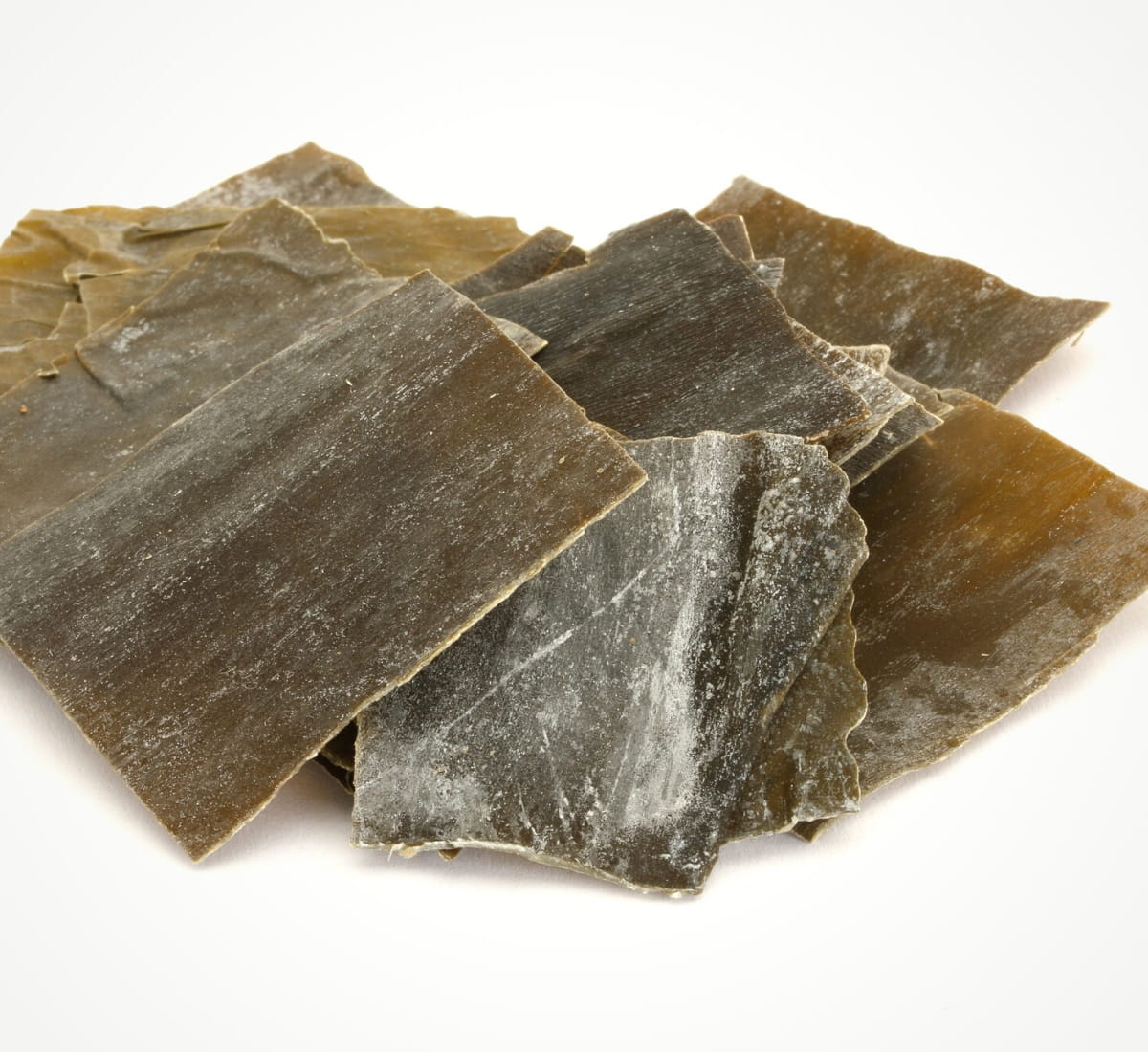
Kombu is one of the most popular types of kelp consumed in Asian cultures, and deserves its own spot on this list of best sea vegetables. This kelp has large, flat leaves that are deep olive green when fresh. When dried, Kombu turns nearly black.
This sea veggie is popular in China and East Asia but is used most abundantly in Japan, where it is one of the base ingredients for dashi, a fermented soup stock. It can also be marinated in soy sauce and eaten as a side or pickled in vinegar.
Kombu has a deep, umami flavor and is often used as a spice in its dried or powdered form. This flavor, which is unique in the vegetable world, comes from a high concentration of the amino acid glutamic acid.
In addition to being a good source of many amino acids, Kombu is also rich in fiber and iodine. Uniquely, it contains many enzymes capable of breaking down complex sugars otherwise indigestible to the human gut.
Read my guide to popular vegetables in Japan for a list of delicious Japanese greens you should consider trying!
5. Nori
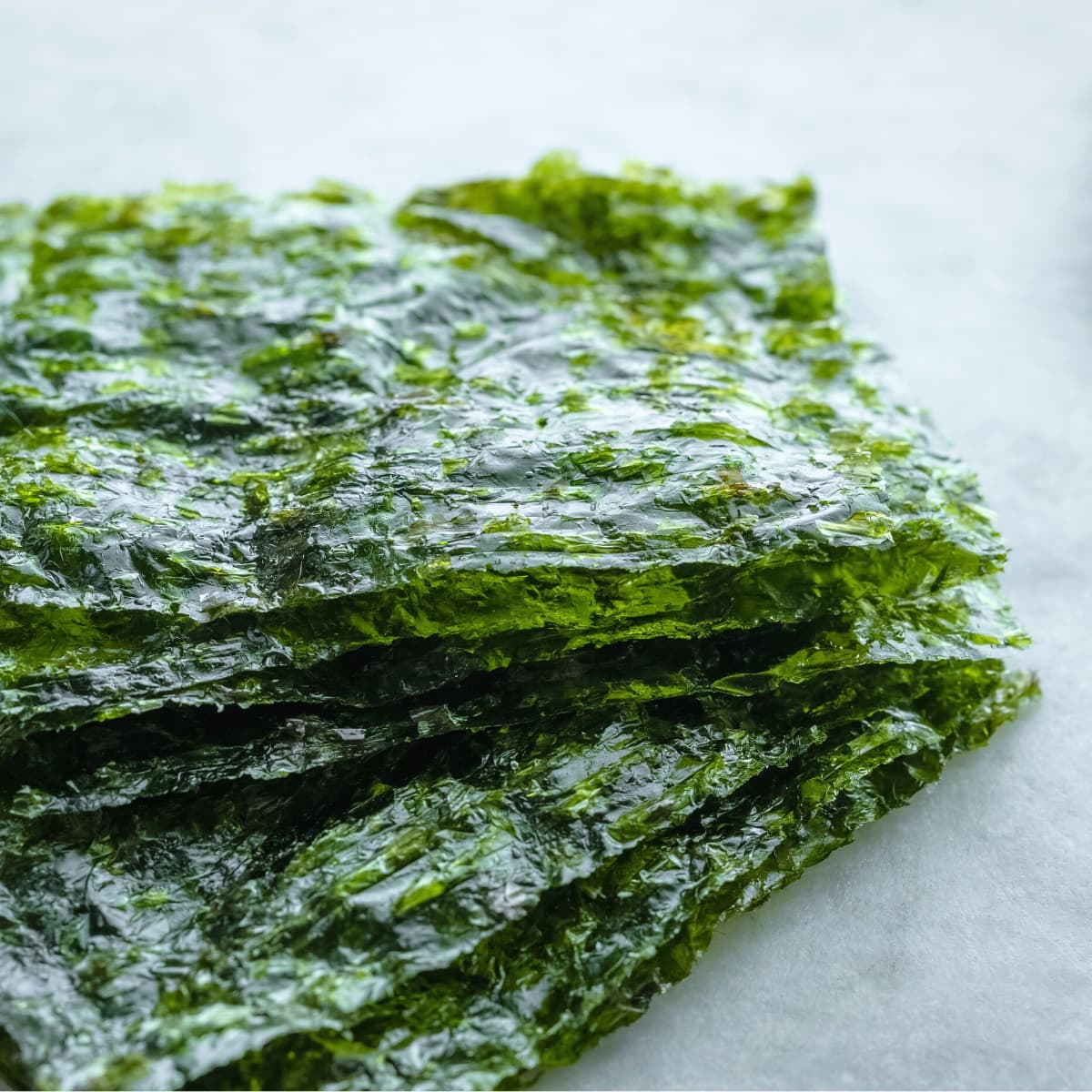
Potentially the most well-known edible seaweed, nori is a staple in Japanese cuisine and a snack gaining popularity in the West. Interestingly, the word “nori” refers not to a specific type of seaweed, but to a seaweed product consisting of dried, flat sheets of algae.
Nori is most often used as a wrap for sushi. The sheets can also be eaten plain as a snack, a trend that has recently taken off in America. Crumbled nori, along with other spices, is used as a flavoring known as furikake.
Despite the green color of nori sheets, most products are made from red algae species like Pyropia tenera and Pyropia yezoensis. Since both of these produce green chlorophyll as well as red, the dried product tends to take on a dark green hue. Nori has a relatively mild taste compared to other sea veggies, and is often flavored with soy sauce, salt, and even sugar.
Read my guide to popular Japanese breakfast foods for a list of Japanese dishes and ingredients you should consider trying!
6. Salicornia
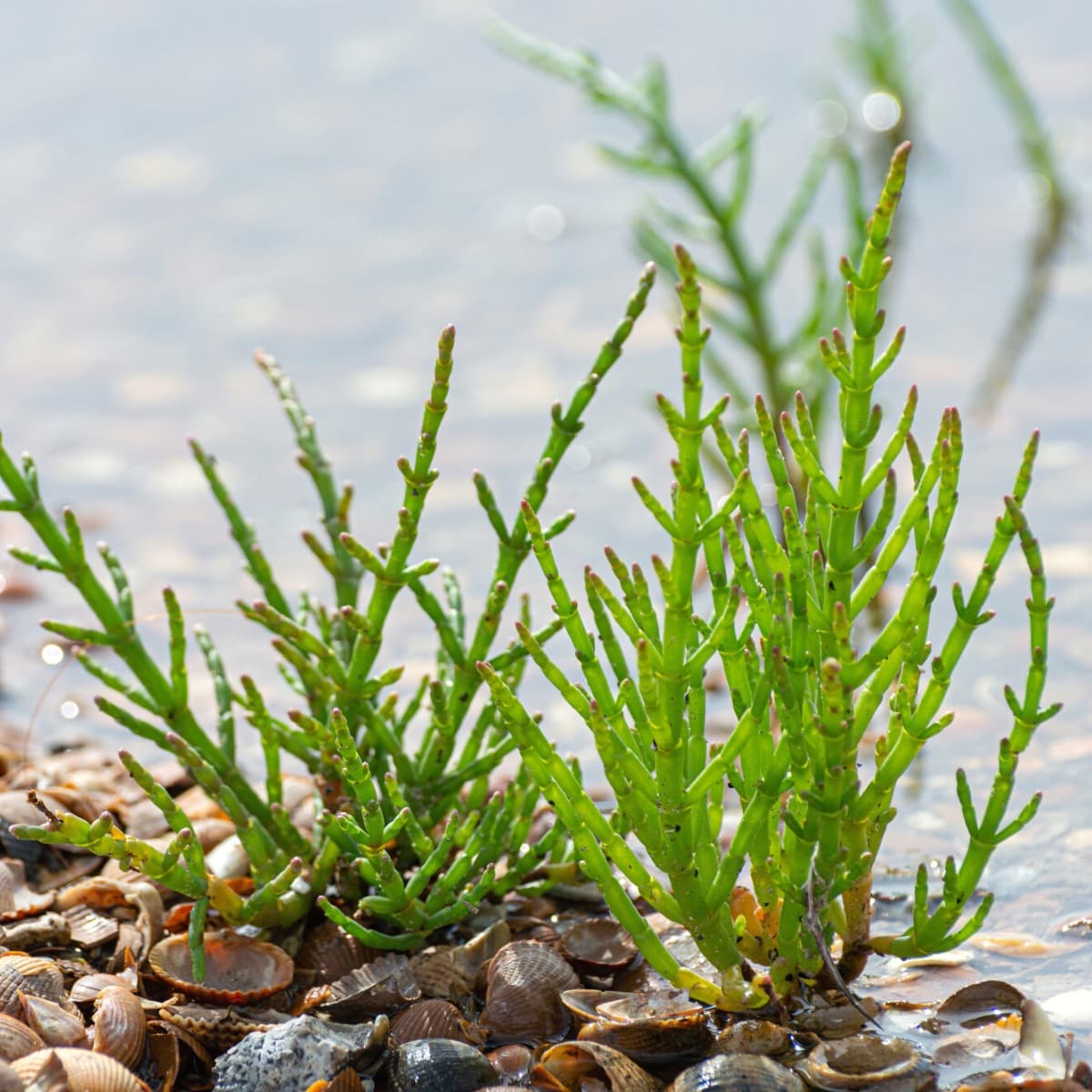
Salicornia, also known as glasswort or pickleweed, is a succulent plant that thrives in salt marshes near the ocean. Species of this plant can be found across the globe, including North America, Asia, and southern Africa.
These stiff, green plants look somewhat like thick grasses with multiple stems and nubby leaves. The entire plant is edible and used both raw and cooked.
In Hawaii, salicornia is known as sea asparagus and used as a salad topping or side for fish after blanching. In Canada, it is known as samphire greens and is considered a delicacy and often pickled. Across the world, it is used as fodder for goats, cows, and donkeys.
Salicornia has a crisp, crunchy texture and an almost overwhelming salty flavor. In short, this sea veggie is nature’s way of adding a sprinkle of the sea to our meals, offering a delightful mix of crunch, flavor, and nutrition.
Read my guide to traditional dishes in Hawaii for a list of popular Hawaiian meals and dishes you should consider trying!
7. Sea Grapes
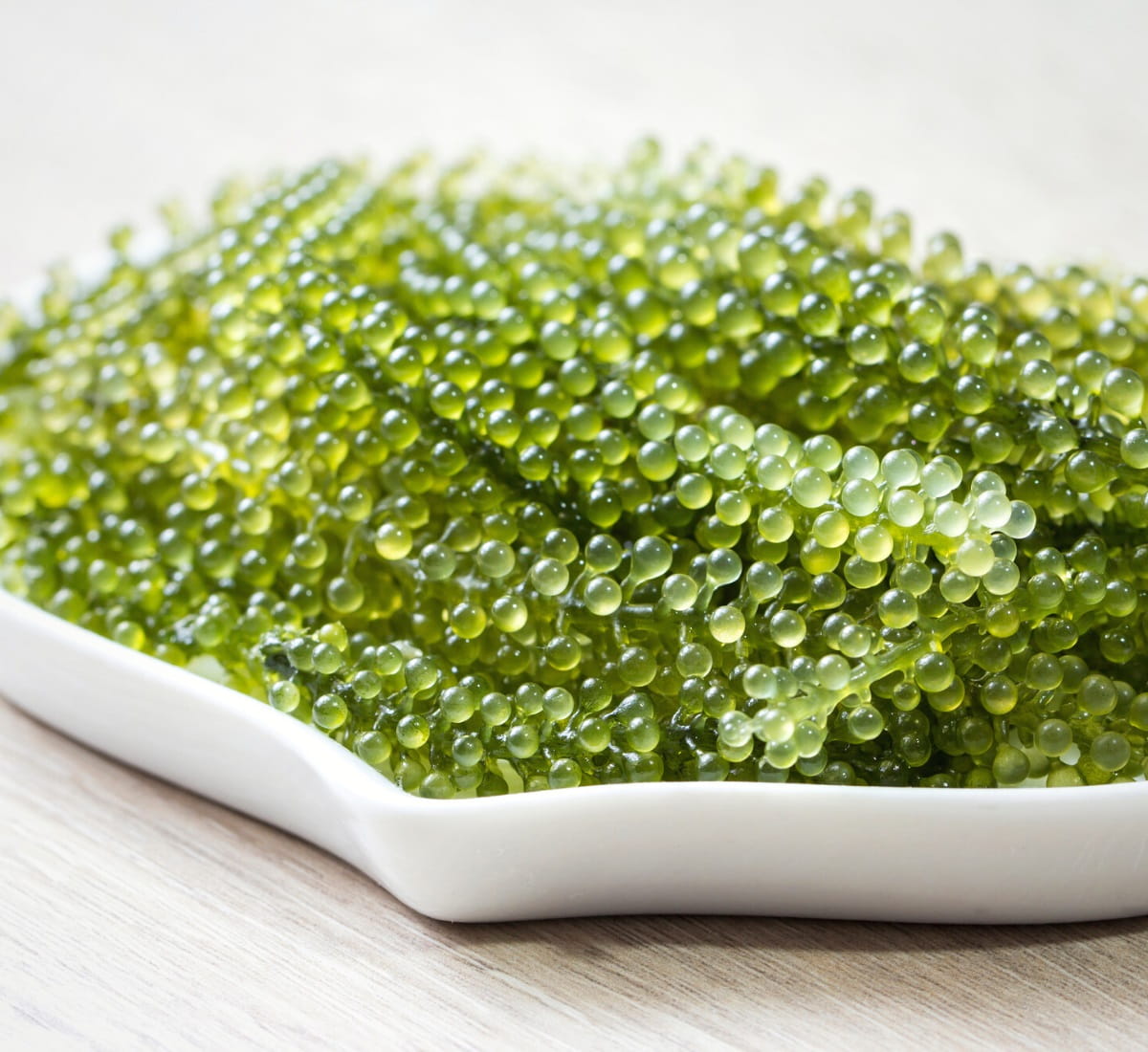
Sea grapes are not only one of the most unique-looking sea vegetables, but they are also highly prized for their succulent texture. This green algae grows tall with hundreds of ball-like leaves growing off its many stems.
The native habitat of this sea vegetable is restricted to the Asian coasts of the Pacific Ocean. It has long been used in cuisines of Southeast Asia and south into Oceania. Also known as green caviar, this strange seaweed is eaten raw by itself or in a special seaweed salad. This salad typically consists of raw shallots, tomatoes, and a fish and vinegar sauce.
Interestingly, sea grapes are very prone to spoilage at low temperatures. Even running this seaweed under cold water has the potential to cause bacterial overgrowth, leading to food poisoning. So proper storage and handling of sea grapes is important.
Despite the risks, this sea veggie is worth hunting down since it’s packed with vitamins and minerals. It is said to “taste like the ocean” and is a favorite of many who enjoy the flavor of kelp.
8. Sea Purslane
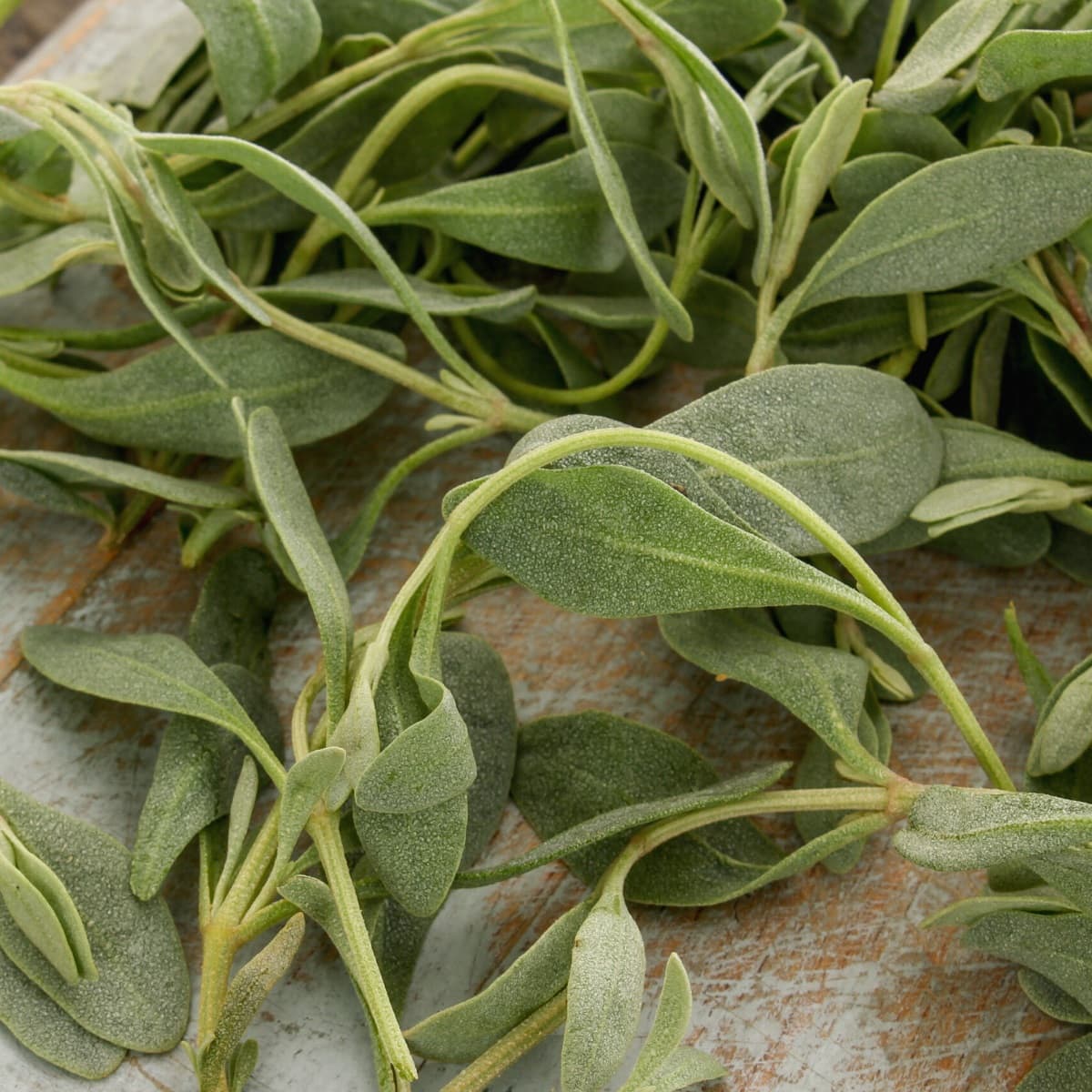
Sea purslane is another true plant that grows in salty soils along coastlines across the world. It is a distant relative to true purslane, but looks very similar, with red stems and thick, oblong leaves. One easy way to identify it is by its delicate, pink, star-shaped flowers.
Despite growing in most coastal countries, this sea vegetable is largely underutilized. In the Philippians, it is pickled and eaten as a side dish. In Britain, it is a favorite of foragers and used as a salty garnish or blanched and served with pepper and lemon.
Historically, this plant was used by people of the Caribbean to treat puncture wounds from venomous fish. Like many other sea vegetables, sea purslane is a great source of many vitamins and minerals, such as iron, calcium, manganese, and more.
9. Spirulina

In terms of trendy health foods, spirulina tops the list. This product is made by drying and pulverizing blue-green algae, resulting in a deep bluish-green powder with a potent earthy, sulfur, sweet flavor. The taste has been described as “getting a mouth full of lake water”.
While not the most appetizing sea vegetable, spirulina powder is still frequently consumed due to its high nutritional value. It is rich in protein, B vitamins, iron, and many essential minerals. It is so nutritious, in fact, that it is being explored as a vital food additive for long-term space missions.
Spirulina is typically added to smoothies, protein shakes, and other mixtures that can adequately cover up the bitter flavor. It can also be mixed with other green powders and added to juice or water.
10. Wakame
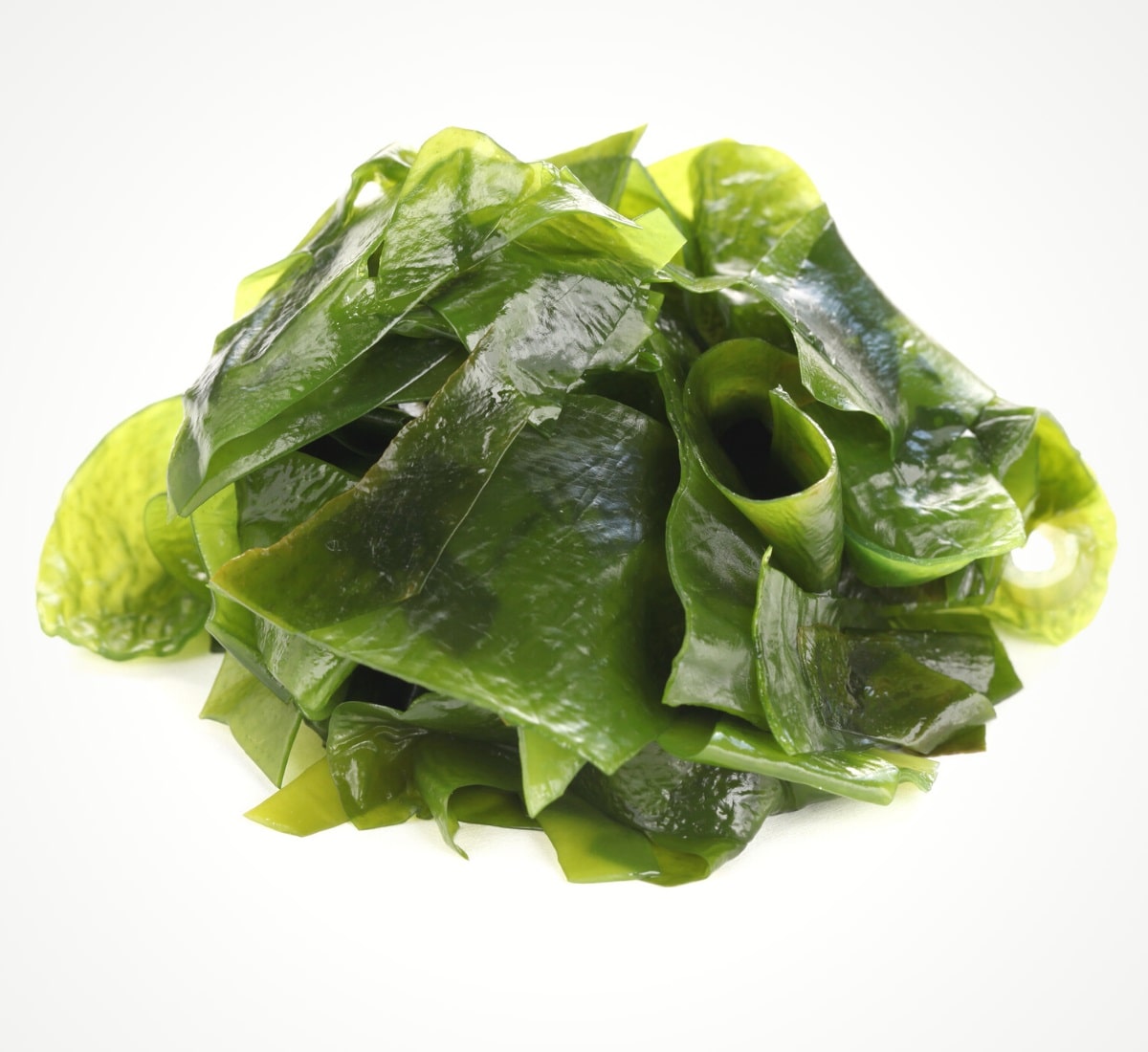
Wakame is a popular type of kelp used across the world. These exceptionally tall plants produce thin, flat leaves and are a major feature in kelp forests. They range in color from bright green to brown.
Most people have eaten wakame even though they may not know it, thanks to its inclusion in miso soup. It is also a main ingredient in Korean seaweed soup and tofu salad. It has a milder flavor than most sea vegetables with a bit of sweetness.
Native to Asian and Russian coastlines, wakame is most popular in Asia and Europe. Today, this seaweed grows as an invasive plant in coastal regions around New Zealand and the United States.
Wakame has many of the same nutritional benefits as other types of kelp. Uniquely, though, it contains a compound called fucoxanthin, which has been studied extensively for its ability to help the body burn fat.
Keen to add more seaweed to your diet? Read my practical guide on how to eat seaweed for a list of helpful tips!
